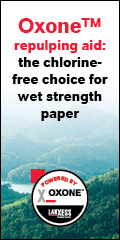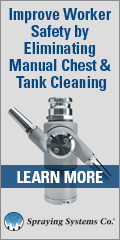
| Archive/Subscribe | TAPPI.org | Advertise | TAPPI Press Catalog | May 2022 |
Procter & Gamble 3Q 2022 Results: Net Sales up 7 Percent from Year Ago to $19.4 billion
The Procter & Gamble Company reported third quarter fiscal year 2022 net sales of $19.4 billion, an increase of seven percent versus the prior year. Excluding the impacts of foreign exchange, acquisitions and divestitures, organic sales increased 10 percent. Diluted net earnings per share were $1.33, an increase of six percent versus prior year EPS. Operating cash flow was $3.2 billion for the quarter. Adjusted free cash flow productivity was 74 percent. The Company returned over $3.4 billion of cash to shareholders via approximately $2.2 billion of dividend payments and $1.2 billion of common stock repurchases. “We delivered another quarter with strong sales growth and made sequential earnings growth progress despite significant and increasing cost headwinds,” said Jon Moeller, president and CEO. “These results enable us to raise our top-line growth outlook for the fiscal year and to maintain our EPS guidance range. Our focus remains on the strategies of superiority, productivity, constructive disruption and continually improving P&G’s organization and culture. These strategies have enabled us to build and sustain strong momentum. They remain the right strategies to manage through the near-term cost and operational challenges we’re facing and to deliver long-term balanced growth and value creation.” January - March Quarter Discussion Net sales in the third quarter of fiscal year 2022 were $19.4 billion, a seven percent increase versus the prior year. Organic sales, which exclude the impacts of foreign exchange and acquisitions and divestitures, increased 10 percent. The organic sales increase was driven by a three percent increase in shipment volumes, five percent from increased pricing, and a two percent increase from positive geographic and product mix.
Gross margin for the quarter decreased 400 basis points versus year ago, 380 basis points on a currency-neutral basis. The decline was driven by 410 basis points of increased commodity costs, 80 basis points of higher freight costs, 30 basis of product/package reinvestments and 130 basis points of negative product mix. These were partially offset by benefits of 220 basis points from increased pricing and 50 basis points from gross productivity savings and other impacts. Selling, general and administrative expense (SG&A) as a percentage of sales decreased 380 basis points versus year ago, 400 basis points on a currency-neutral basis. The decrease was driven by 270 basis points of leverage benefit due to increased sales and 130 basis points of gross productivity savings from overhead and marketing expenses. Operating margin for the quarter decreased 10 basis points versus the prior year and increased 20 basis points on a currency-neutral basis. Operating margin included gross productivity cost savings of 170 basis points. |



